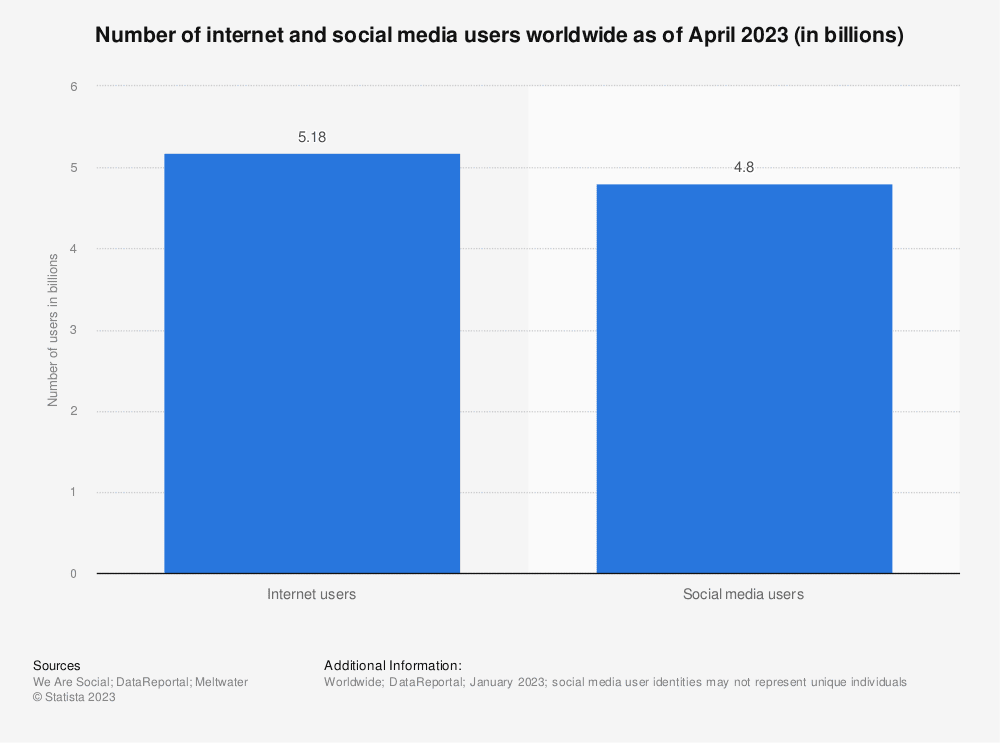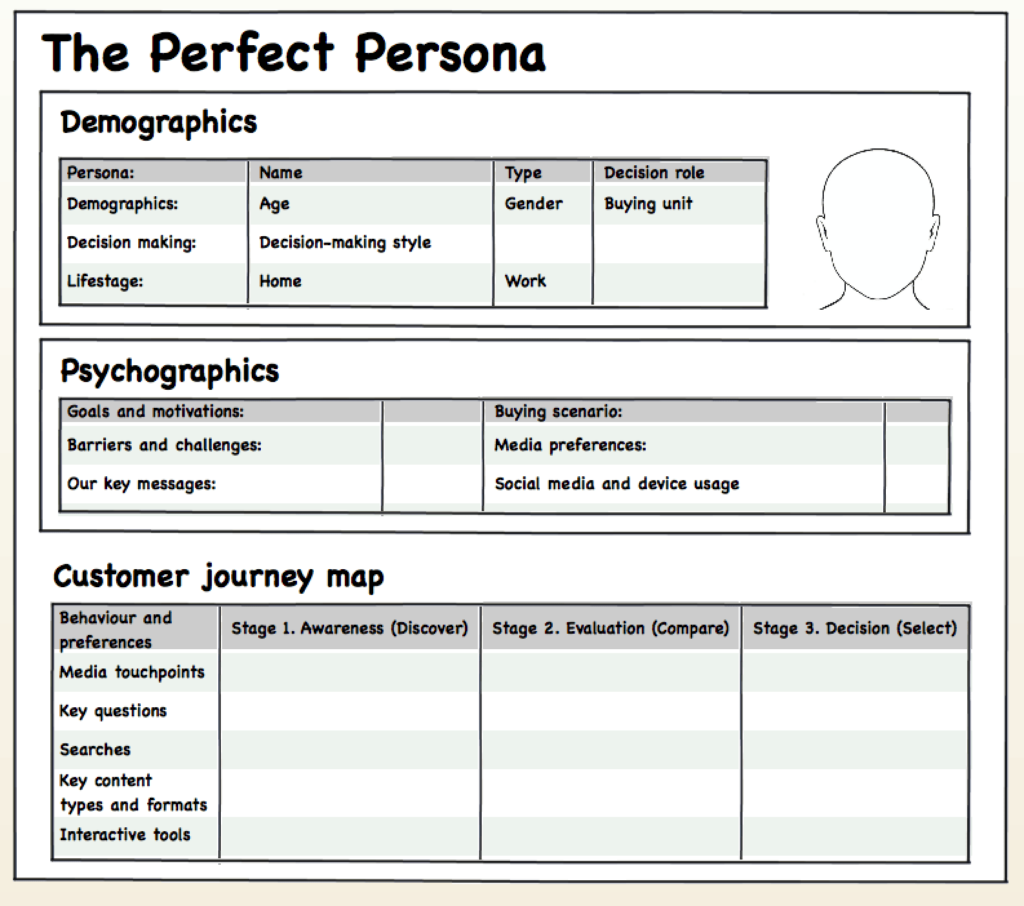Building Brand Stories in a Data-Driven World: A Guide To Integrating Content and Programmatic Advertising
How often have you convinced someone you know to buy something because of a story you told them?
Picture this exchange:
“Yeah, I woke up this morning and found ants crawling all over my counters. So gross! And all I had on hand was this dish spray, but gosh darn if it didn’t drown them all on the spot! Then I had to wipe them up with a paper towel. Done and done!”
“Gee, that sounds great. Maybe I’ll get that for the ants in my apartment!”
But you can’t use that story on just anybody. You won’t convince someone to buy “the dish spray that drowns ants” if they don’t have an ant problem.
So, how do you get that story to the right person without excluding the majority of consumers who just want something to clean their dishes with?
You integrate content and programmatic advertising. This is the way to tell brand stories in the digital era.
Chapters
- A evolução da narrativa de marcas na era digital
- A importância dos dados na estratégia de marketing moderna
- O papel da publicidade programática em um mundo orientado por dados
- Compreendendo o básico
- O que é publicidade programática?
- O poder dos dados: insights e tendências para marcas
- Marketing de conteúdo: elaborando narrativas de marca que ressoem com o público
- A interseção entre narrativa, dados e publicidade programática
- Etapas práticas para integrar conteúdo e publicidade programática
- O futuro da narrativa de marcas em um mundo orientado por dados
- O papel da privacidade e da proteção de dados nas futuras estratégias de marketing
- Conclusão
- Perguntas Frequentes
The Evolution of Brand Storytelling in the Digital Era

Brand storytelling is an easy concept to grasp. All you’re doing is telling a story about your brand or product that your target consumer base connects with emotionally.
(For example, as someone who has struggled with ants in the house, I connect with the “dish spray that drowns ants” story deeply emotionally.)
One could argue that in the digital age, it’s become more accessible than ever to tell a story about your brand. There are more mediums now than before, including television, radio, the internet, and social media.
But the unique challenge of brand storytelling is finding the right narrative that resonates with the right consumers. To know that, you have to know who your consumers are. And to know that, you have to have data.
The Significance of Data in Modern Marketing Strategy
Data is the currency of modern marketing. Without it, brands might give up.
To understand why, just look at how consumer bases have expanded. The internet fundamentally changed how people buy and sell goods and services. Anyone with a Wi-Fi connection and a credit card can purchase something today. That means the more than 5 billion internet users are all potential customers.

Source: Statista
And you can bet that companies are willing to sell to any and all of them. To do so, they must be willing to spend big money on marketing. In 2022, the global marketing sector had a value of $854.24 billion – so enormous that it’s impossible to wrap your mind around it.
You can’t possibly market to everyone all at once, though. You’d be wasting a lot of money and effort if you did. That’s why data is critical. Knowing who the target audience for your product is and what drives them to buy is key to brand story content creation.
Once you have your brand content for each customer type, the problem becomes how to serve it. But modern problems call for modern solutions, and programmatic advertising is the answer in a data-driven world.
The Role of Programmatic Advertising in a Data-Driven World
With programmatic advertising, telling the right brand story to the right type of customer becomes a matter of course rather than a problem.
There’s really no better alternative for marketing in the digital space. Programmatic advertising saves time, is cost-effective, and operates on that currency that makes everything in marketing guide the customer calmly and willingly down the sales funnel: data.
Understanding the Basics
Just like you learn to tell compelling stories by breaking them down into their basic parts, we have to attack the basics of brand storytelling through programmatic advertising before learning how to use it.
Let’s start with the most basic question of all.

What is Programmatic Advertising?
Programmatic advertising is a type of advertising that uses an automated system to buy ad space from digital publishers (i.e., websites) across the internet.
To implement programmatic advertising, marketers must start an ad campaign on a demand-side platform (DSP), which sells ad inventory. These platforms sell ad space based on a variety of factors, including:
- The type of audience viewing the webpage that’s hosting the ad space
- The bid amount
- The relevance of the advertisement to the user viewing the ad
- The placement of the ad on the webpage
- The level of competition between advertisers.
Typically, advertisers set a maximum bid based on how much money they’re willing to spend per 1000 impressions, AKA views of their ad. This amount is called the cost per mille (CPM). The entire purchase and placement process of the ad literally takes place in the time it takes for a web page to load. Thus, the reason for this system is automated.
For an in-depth explanation of programmatic advertising, watch this video:
The Power of Data: Insights and Trends for Brands
For programmatic advertising to work, the marketer using it must know who their target audience is. Based on metrics such as demographics and audience interests, they can build a compelling campaign that shows certain ads to certain consumers, depending on which one would most effectively initiate the following action in the sales funnel.
This is where data becomes a powerful tool. Check out these insights and trends about the impact of data in marketing from a survey by Invesp.
- 88% of marketers surveyed by Invesp said they used third-party data to understand their customers better.
- Businesses that use data-driven personalization in marketing generated 5-8 times more ROI on their marketing spend.
- Marketers that blew past their revenue goals were using “personalization techniques” based on consumer data 83% of the time.
- 64% of marketing executives surveyed agreed that data-driven marketing is crucial to the economy.
Content Marketing: Crafting Brand Narratives that Resonate with the Audience
But the success of brand storytelling and programmatic advertising doesn’t rest on data alone. Another lynchpin is crafting brand narratives that resonate with the target audience.
This is the essence of content marketing, which gives consumers valuable content to keep them engaged.
The key is creating content that addresses a problem or a pain point the customer is experiencing. That’s how you create the emotional center around which you can design a narrative or a story that will move the customer from a place of pain to a place of resolution.
The resolution is either your product or an action that will inevitably lead them to your product.
The Intersection of Storytelling, Data, and Programmatic Advertising

How do we bring all these basics together? Let’s go through it, beat by beat.
How Programmatic Advertising Enhances Content Marketing Efforts
Different customers have different problems that can be addressed by the same solution – your product. To market to them all, you must create different brand narratives. Then, using programmatic advertising, you can send the right content to the right customer on the right marketing channel without lifting a finger.
Creating Data-Informed Brand Stories for Targeted Audiences
Data informs the brand stories that you create for your various target audiences.
For example, a story about going off to college to advertise a laptop will resonate better with a younger demographic of 18-24-year-olds. In contrast, a story about going back to college online works better for adults in their 30s to 50s.
But to find out which will work best, you need data about your audience’s ages and other demographics.
Ensuring Consistency in Brand Narratives Across Multiple Advertising Channels
Just because you have different brand narratives and advertising channels for different types of customers, that doesn’t mean that you can’t maintain consistency. Having a brand identity with a logo and a style guide will help you tell brand stories that match in tone, if not in the target.
Practical Steps to Integrate Content and Programmatic Advertising
Here are some practical steps to integrating content and programmatic advertising for your own use cases.
Steps to Develop a Data-Informed Content Strategy
Step 1: Gather data
The first step is to gather data. This can be done through basic traffic analytics to your website and first-party data you gain using your own resources. This can include:
- Web browsing history
- Age and gender
- Purchase history
- Customer service history
- Email campaign engagement
- Online behavior
- Survey results
- Customer reviews
- Social media platform preferences
Step 2: Identify patterns
Next, identify patterns in the data by grouping your customers based on their traits. For example, you can group them by age and/or gender and the average amount they spend on a purchase from your website.
Step 3: Develop buyer personas
Use the patterns you identified to develop buyer personas. These fictional characters represent the different types of customers that typically buy from you.

Source: Dave Chaffey
Step 4: Create targeted content
Finally, create a data-informed content strategy that targets your buyer personas.
Utilizing Programmatic Advertising to Reach the Right Audience
Once you’ve developed your content strategy, utilize programmatic advertising to reach the right audiences. Set up your ad campaign to filter placement according to specific criteria describing your buyer personas and their online behavior (i.e., what they shop for online, what platforms they buy from, etc.).
Monitoring and Adjusting Your Strategy Based on Data Insights
After you set up your programmatic advertising campaign, monitor and adjust your strategy based on data insights from the results of that campaign. Use what works and throw out what doesn’t.
The Future of Brand Storytelling in a Data-Driven World
Suppose you’re wondering why now is the time to integrate content and programmatic advertising. In that case, brand storytelling will always be with us – even in a world that runs on cold, unfeeling data like age ranges and buyer patterns.
You have to remember that data alone doesn’t sell products. But stories do. They’re about 22 times more memorable than facts, creating bonds of trust and authenticity between brands and customers that simply wouldn’t exist.
But there is one thing that marketers should be vigilant about when considering the future of brand storytelling in a data-driven world. And that is the impact of collecting vast amounts of data about private citizens.
The Role of Privacy and Data Protection in Future Marketing Strategies
In the United States, no federal privacy laws govern what type of data companies can collect about their customers, how they can use it, or where they can sell it.
The collection and sale of private data have become so pervasive, however, that individual states have begun passing their own consumer privacy laws to combat it.
There’s also a growing concern among consumers themselves about what companies are learning about them from basic interactions, like buying a product or even just visiting their website.
As the landscape for consumer privacy continues to shift, marketers should ensure that the data they’re sourcing from their customers is responsibly, ethically, and legally obtained.
Conclusion
Stories have always been with us, from when we sat around campfires comparing hunts and gatherings to our present digital age. They help us communicate lessons, values, and solutions to problems.
More importantly, they help marketers make a sale. And when you combine content marketing with programmatic advertising, you ensure the story gets to the right person who will click “Buy.”
Frequently Asked Questions
What is programmatic advertising, and how does it work?
Programmatic advertising is an automated system of buying ad space that allows marketers to target specific consumers with stories that will resonate with each of them the best.
How can data insights improve my brand’s content marketing strategy?
Data insights can inform your content marketing strategy by telling who your audience is and what stories will impact them the most.
What steps can I take to integrate programmatic advertising into my content strategy?
Gather data about your audience, identify patterns in the data, create buyer personas, create story-based advertisements geared to each persona, and use programmatic advertising to send specific ads to internet users based on the persona they fit into.
How can I ensure my brand’s story remains consistent across different advertising platforms?
Use a similar style guide, logo, and tone for your story to keep it consistent across multiple advertising platforms.
What are some examples of brands successfully integrating content marketing with programmatic advertising?
Some examples of brands that successfully integrate content marketing with programmatic advertising are Chewy, Target, and YouTube.
How might future technology trends impact how we use programmatic advertising and tell brand stories?
Future trends, such as the continuing emergence of AI across various industries, could impact programmatic advertising and brand storytelling by making targeting customers even more accessible and precise.
How does data privacy factor into the future of programmatic advertising and brand storytelling?
Marketers should treat them lightly when collecting and using data from their customers to ensure they don’t overstep the bounds of the law as consumer privacy becomes a bigger legal issue.
What is programmatic advertising?
Programmatic advertising refers to the automated buying and selling of digital advertising space in real-time through the use of algorithms and technology platforms. It enables advertisers to target specific audiences and optimize ad placements based on data and insights, often resulting in more efficient and effective campaigns.
How does programmatic advertising differ from traditional advertising methods?
Unlike traditional advertising methods, which involve manual negotiations and placement of ad inventory, programmatic advertising relies on automated processes to purchase ad space in real-time. It allows for precise audience targeting, dynamic ad creative optimization, and efficient budget allocation across multiple channels.
What are the benefits of programmatic advertising for advertisers?
The benefits of programmatic advertising for advertisers include increased efficiency and cost-effectiveness, improved targeting and audience segmentation, real-time campaign optimization, greater transparency and control over ad placements, and access to valuable data and insights for performance measurement and attribution.
How does programmatic advertising enable audience targeting and segmentation?
Programmatic advertising leverages data from various sources, such as browsing behavior, demographics, and geographic location, to target specific audience segments with relevant ad content. Advertisers can define custom audience parameters and use real-time bidding to reach the most relevant users at the right moment.
What role do ad exchanges and demand-side platforms (DSPs) play in programmatic advertising?
Ad exchanges act as digital marketplaces where publishers can sell ad inventory to advertisers through real-time bidding auctions. Demand-side platforms (DSPs) are software platforms that enable advertisers to purchase and manage ad inventory across multiple ad exchanges, optimizing campaign performance and reach.
How does real-time bidding (RTB) work in programmatic advertising?
Real-time bidding (RTB) is a key component of programmatic advertising that allows advertisers to bid on ad impressions in real-time auctions. Advertisers submit bids for ad placements based on audience targeting criteria and budget constraints, with the highest bidder winning the opportunity to display their ad to the user.
What are some common types of programmatic advertising formats?
Common types of programmatic advertising formats include display ads, video ads, native ads, and audio ads. Each format offers unique opportunities for engagement and can be tailored to fit different campaign objectives and audience preferences.
How does programmatic advertising enable dynamic ad creative optimization?
Programmatic advertising platforms use algorithms and machine learning to analyze user data and optimize ad creative elements in real-time. This allows advertisers to deliver personalized ad experiences based on factors such as user behavior, location, and device type, maximizing engagement and conversion rates.
What are the main challenges or concerns associated with programmatic advertising?
Some challenges and concerns associated with programmatic advertising include ad fraud and brand safety risks, concerns about data privacy and compliance with regulations such as GDPR, the potential for ad viewability issues, and the need for ongoing monitoring and optimization to ensure campaign effectiveness.
How can advertisers measure the success and ROI of their programmatic advertising campaigns?
Advertisers can measure the success and ROI of their programmatic advertising campaigns by tracking key performance indicators (KPIs) such as click-through rates (CTR), conversion rates, return on ad spend (ROAS), and cost per acquisition (CPA). Advanced attribution models and analytics platforms can provide deeper insights into campaign performance and effectiveness.
Alise Zaiceva
 Alise Zaiceva is a content marketing manager at a website monetization platform Setupad. She’s passionate about content and helping publishers scale their businesses through powerful digital marketing strategies. In her free time, she travels to explore bookshops, eats local cuisine, and does yoga.
Alise Zaiceva is a content marketing manager at a website monetization platform Setupad. She’s passionate about content and helping publishers scale their businesses through powerful digital marketing strategies. In her free time, she travels to explore bookshops, eats local cuisine, and does yoga.
Top AI Marketing Generators
Master the Art of Video Marketing
AI-Powered Tools to Ideate, Optimize, and Amplify!
- Spark Creativity: Unleash the most effective video ideas, scripts, and engaging hooks with our AI Generators.
- Optimize Instantly: Elevate your YouTube presence by optimizing video Titles, Descriptions, and Tags in seconds.
- Amplify Your Reach: Effortlessly craft social media, email, and ad copy to maximize your video’s impact.